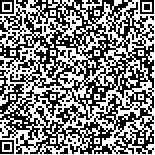| 引用本文: | 刘莹慧,卢俊平,赵胜男,史小红,孙标,张晓晶,石震宇,米家辉.基于长时间序列乌梁素海水环境变化趋势及生态补水等关键驱动因子分析(2011—2020年).湖泊科学,2023,35(6):1939-1948. DOI:10.18307/2023.0621 |
| Liu Yinghui,Lu Junping,Zhao Shengnan,Shi Xiaohong,Sun Biao,Zhang Xiaojing,Shi Zhenyu,Mi Jiahui.Water environment change trend and ecological water replenishment of Lake Wuliangsuhai and other key driving factors analysis based on long time series (2011-2020). J. Lake Sci.2023,35(6):1939-1948. DOI:10.18307/2023.0621 |
|
| |
|
|
| 本文已被:浏览 1856次 下载 1675次 |

码上扫一扫! |
|
|
| 基于长时间序列乌梁素海水环境变化趋势及生态补水等关键驱动因子分析(2011—2020年) |
|
刘莹慧1, 卢俊平1,2, 赵胜男1,2, 史小红1,2, 孙标1,2, 张晓晶1,2, 石震宇1, 米家辉1
|
|
1.内蒙古农业大学水利与土木建筑工程学院, 呼和浩特 010018;2.内蒙古自治区水资源保护与利用重点实验室, 呼和浩特 010018
|
|
| 摘要: |
| 基于2011—2020年乌梁素海水质监测数据,将综合营养指数法、PCA排序法和ArcGIS克里金插值法有机结合,综合评价2011—2020年乌梁素海水体富营养化程度年际时空变化特征,厘清引起水体富营养化发生变化的关键性驱动因子。研究结果表明:(1)乌梁素海水体总磷和总氮的峰值出现在平水期,氨氮的峰值在枯水期,CODMn的峰值在丰水期,水质整体以地表Ⅲ类水为主。(2)2011—2020年湖体水质经历了由轻度富营养-中营养-轻度富营养-中营养的变化过程,综合营养状态指数在60~70(中度富营养)的湖区面积占比由21.49%逐渐消失,综合营养状态指数在30~50(中营养)的湖区面积占比由23.84%扩增到44.87%。(3)乌梁素海生态补水量与总氮、总磷、CODMn和综合营养状态指数呈负相关,是影响湖泊水体营养化的另一个关键性驱动因子。 |
| 关键词: 乌梁素海 富营养化 水质 综合营养指数法 生态补水 |
| DOI:10.18307/2023.0621 |
| 分类号: |
| 基金项目:国家自然科学基金项目(52260029)、内蒙古自治区教育厅科技英才项目(NJYT22040)、内蒙古农业大学青年教师科研能力提升专项(BR220102)、国家重点研发计划项目(2019YFC0409204)和内蒙古自然科学基金项目(2021MS04013)联合资助。 |
|
| Water environment change trend and ecological water replenishment of Lake Wuliangsuhai and other key driving factors analysis based on long time series (2011-2020) |
|
Liu Yinghui1, Lu Junping1,2, Zhao Shengnan1,2, Shi Xiaohong1,2, Sun Biao1,2, Zhang Xiaojing1,2, Shi Zhenyu1, Mi Jiahui1
|
|
1.Water Conservancy and Civil Engineering College, Inner Mongolia Agricultural University, Hohhot 010018, P.R. China;2.Water Resources Protection and Utilization Key Laboratory, Inner Mongolia Agricultural University, Hohhot 010018, P.R. China
|
| Abstract: |
| Based on the water quality monitoring data of Lake Wuliangsuhai from 2011 to 2020, the comprehensive nutrition index method, PCA sorting method and ArcGIS Kriging interpolation method were combined to comprehensively evaluate the interannual temporal and spatial variation characteristics of the eutrophication degree of Lake Wuliangsuhai from 2011 to 2020. Additionally, this study aimed to elucidate the key drivers that contributed to changes in water eutrophication. The research results showed that: (1) The peaks of TP and TN of Lake Wuliangsuhai occurred during the flat water period, the peak of NH3-N was observed during the dry season, and the peak of CODMn was during the wet season. The overall water quality was found to be mainly surface water. (2) Between 2011 and 2020, the water quality of the lake underwent a transition from mild eutrophication to moderate eutrophication, followed by a retum to mild eutrophication, and ultimately to a state of medium nutrient status. The proportion of the lake area with a comprehensive nutrient index of 60-70 (moderate eutrophication) decreased from 21.49% to a point where it has now nearly disappeared, while the proportion of the lake area with a comprehensive nutritional index of 30-50 (medium nutrition) increased from 23.84% to 44.87%. (3) The ecological water replenishment of Lake Wuliangsuhai was negatively correlated with TN, TP, CODMn and comprehensive nutrient status index, This indicates that ecological water replenishment was another key driver that impacted the trophication of lake water. |
| Key words: Lake Wuliangsuhai eutrophication water quality comprehensive nutrition index method ecological water replenishment |
|
|
|
|